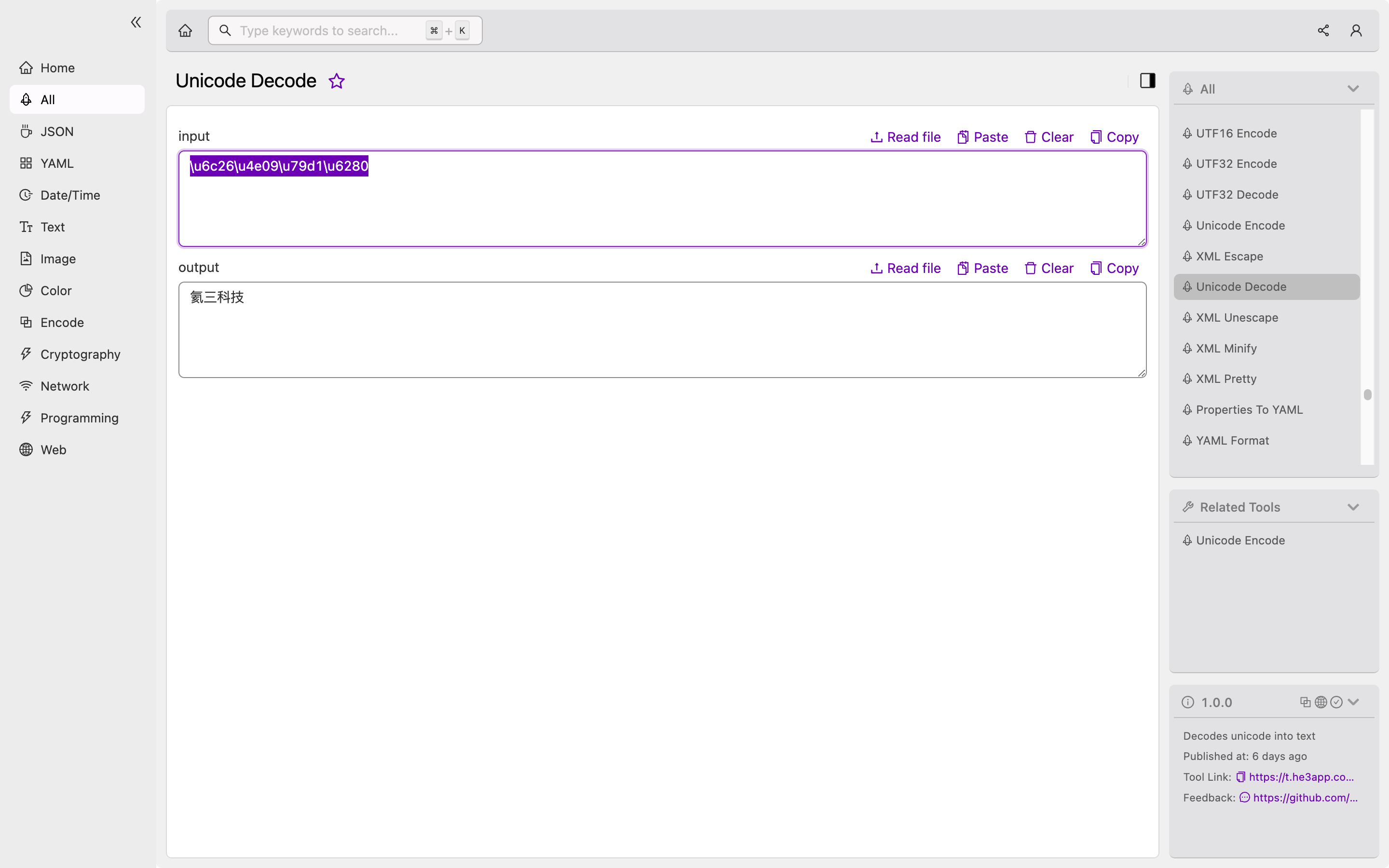Introduction
As the world becomes more digitized, the need to share information across different languages and systems has become increasingly important. However, different languages and systems use different character encoding schemes, making it difficult to share information seamlessly. Unicode Decode is a tool that helps developers solve this problem by converting encoded characters to their corresponding Unicode code points. In this article, we’ll explore the concept of Unicode Decode, its key features and use cases, misconceptions around it, and answer frequently asked questions.
What is Unicode Decode?
Unicode is a universal character encoding standard that assigns unique code points to every character in every language. Unicode Decode is a process of converting encoded characters to their corresponding Unicode code points. This process is necessary because computers store and process characters as binary data, and different character encoding schemes are used to represent characters in binary format. For example, ASCII is a character encoding scheme that represents characters using 7 bits, while UTF-8 and UTF-16 use variable-length encoding schemes to represent characters in 8-bit and 16-bit formats, respectively.
The process of Unicode Decode involves identifying the character encoding scheme used to represent the characters, and then converting the encoded characters to their corresponding code points. Code points are numerical values that represent each character in Unicode, and they range from 0x0000 to 0x10FFFF. Once the encoded characters have been decoded to their code points, they can be displayed and processed correctly.
How Unicode Decode Works
Unicode Decode works by identifying the character encoding scheme used to encode the characters and then decoding the encoded characters to their corresponding code points. This process can be done using programming languages like Python, Java, and JavaScript, or through online tools like Unicode Decoder.
Decoding with Python
In Python, you can use the decode() method to decode character strings encoded in various formats. Here’s an example of decoding a UTF-8 encoded string:
utf8_str = "\u6d4b\u8bd5\u6587\u5b57"
decoded_str = utf8_str.encode('utf-8').decode('unicode-escape')
print(decoded_str)Output: 测试文字
Decoding with JavaScript
In JavaScript, you can use the decodeURIComponent() function to decode URI-encoded strings. Here’s an example of decoding a URI-encoded string:
const uriEncodedStr = "%E6%B5%8B%E8%AF%95%E6%96%87%E5%AD%97";
const decodedStr = decodeURIComponent(uriEncodedStr);
console.log(decodedStr);Output: 测试文字
Or you can use Unicode Decode tool in He3 Toolbox (https://t.he3app.com?k01d) easily.

Use Cases for Developers
Unicode Decode has many use cases for developers, including:
- Reading and writing files in different character encoding schemes
- Converting text between different character encoding schemes
- Parsing data from different sources that use different character encoding schemes
- Processing and displaying text on websites and applications that support multiple languages
Key Features
Here are some key features of Unicode Decode:
| Feature | Description |
|---|---|
| Compatibility | Supports all major character encoding schemes, including UTF-8, UTF-16, and ASCII |
| Flexibility | Can be used with different programming languages and online tools |
| Efficiency | Can decode large amounts of data quickly and accurately |
| Accuracy | Ensures that characters are displayed and processed correctly |
Misconceptions and FAQs
Misconception: Unicode is a character encoding scheme
Unicode is not a character encoding scheme. It is a universal character encoding standard that assigns unique code points to every character in every language. The encoding schemes used to represent characters in binary format are UTF-8, UTF-16, and others.
FAQ 1: Can Unicode Decode be used to encode characters?
No, Unicode Decode does not encode characters. It only decodes encoded characters to their corresponding code points. To encode characters, you need to use Unicode Encode.
FAQ 2: What is the difference between UTF-8 and UTF-16?
UTF-8 and UTF-16 are both variable-length encoding schemes used to represent Unicode characters in binary format. The difference between them is that UTF-8 uses 8-bit units to encode characters, while UTF-16 uses 16-bit units. UTF-8 is more compact and can represent all Unicode characters, while UTF-16 is faster and more efficient for characters in the Basic Multilingual Plane (BMP).
Conclusion
Unicode Decode is a powerful tool that helps developers work with text in different character encoding schemes. By decoding encoded characters to their corresponding Unicode code points, developers can process and display text correctly, regardless of the language or system used. With its compatibility, flexibility, efficiency, and accuracy, Unicode Decode is a must-have tool for any developer working with text-based data.
References:
